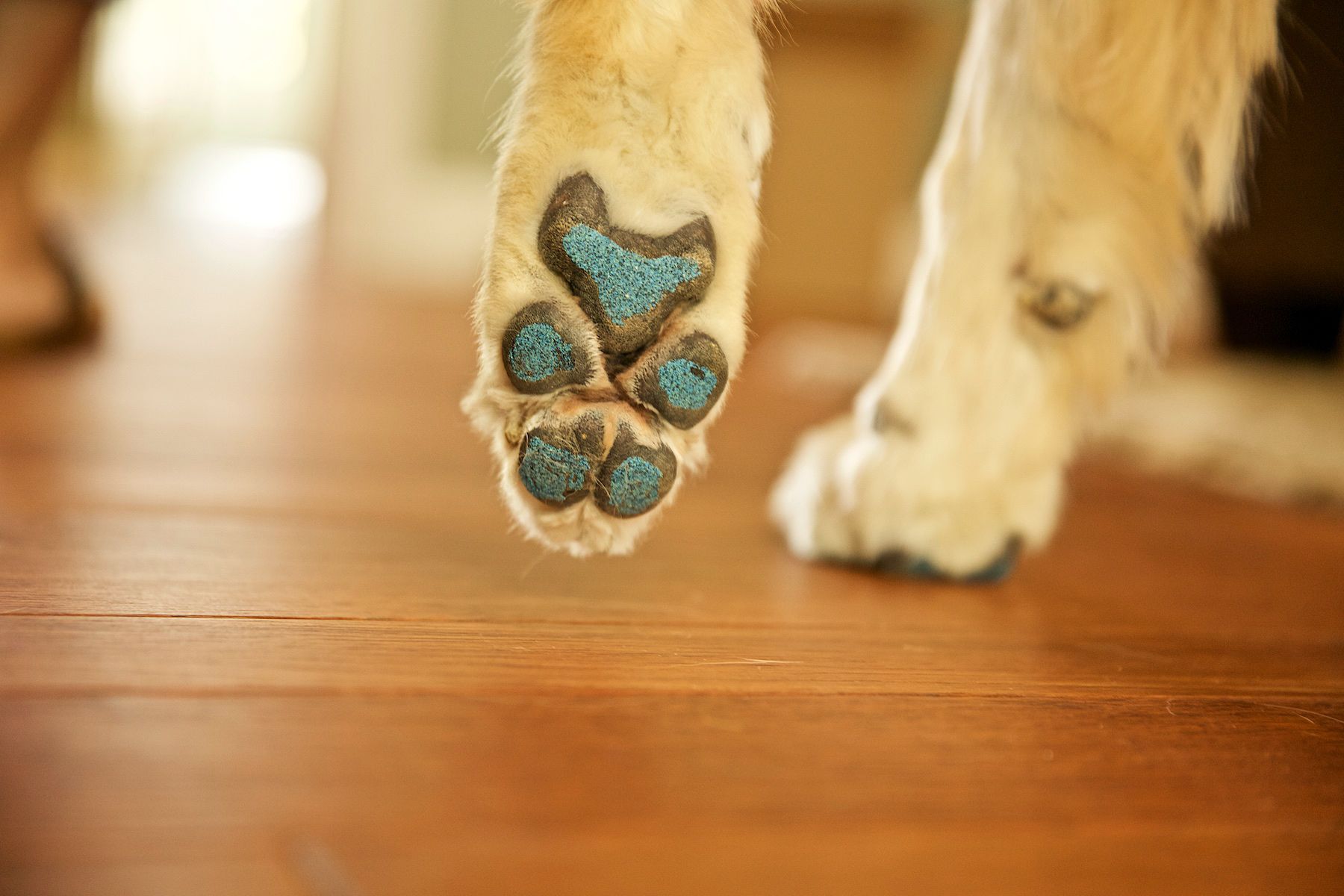What is Paw Abscess?
A paw abscess is a localized infection deep within the footpad or between the toes of a dog. It causes a painful swelling filled with pus. If left untreated, abscesses can rupture, spread infection, and lead to serious consequences. That’s why it’s crucial to recognize and properly treat a dog paw abscess.
Causes of Paw Abscesses
Abscesses typically develop when bacteria penetrate deep into the paw tissue, usually through a cut, puncture wound, or cracked pad. Common causes include:
- Stepping on a foreign object like a thorn, nail, or glass.
- Injuries from rough surfaces like sharp rocks.
- Bites or stings from insects or spiders.
- Folliculitis or infection of the hair follicle.
- Spread of infection from another part of the body.
Signs of Paw Abscess
Watch for these symptoms which indicate a possible paw abscess:
- Swelling of the paw pad or between the toes.
- Painful sensitivity to touch of the area.
- Reddened skin around swelling.
- Reluctance to walk or limping.
- Licking or chewing at the paw.
- Discharge of pus from the wound.
- Prompt veterinary care is vital at the first signs of an abscess to prevent it from worsening.

Diagnosing Abscess
To check for abscess, the vet will:
- Gently palpate the paw to locate swelling and pain.
- Look for external wound, reddened skin, and discharge.
- Take an x-ray to identify location and size of abscess pocket.
- Use ultrasound to find depth and borders of infection.
- Possibly sedate and surgically open up the wound to examine and drain infection.
- Send a pus sample for bacterial culture to identify the specific pathogen.
Treating Paw Abscess
Treatment focuses on draining the infection and preventing its spread. Options may include:
- Sedating the dog and surgically lancing open the abscess to clean out all the pus and debris. This is the quickest way to relieve pressure and pain.
- Inserting a small drainage tube into the cavity after lancing and flushing with sterile saline solution. This allows continuous drainage of infection over several days.
- Prescribing oral antibiotics and antibiotic gel to apply topically. Broad spectrum antibiotics treat the specific bacteria identified from the culture.
- Recommending anti-inflammatory medications to control pain and swelling.
- Instructing the owner to soak the paw in an Epsom salt solution to draw out infection.
- Covering the foot with a light bandage to protect the wound as it heals. Resting the foot helps decrease inflammation.

Recovery and Prevention
With proper treatment, most abscesses heal fully within 1-2 weeks. To prevent reoccurrence:
- Ensure the dog avoids rough terrain that can injure paws.
- Check paws routinely for cuts or cracks and treat promptly.
- Control infectious skin conditions like pododermatitis that can spread to feet.
- Remove any embedded foreign material like grass seeds or thorns.
- Use paw wax or balm to moisturize and protect feet on outdoor excursions.
Caught and treated early, most dog paw abscesses have excellent recovery rates and complications can be avoided. Being attentive and proactive with foot care keeps our best friends comfortable on all of their many wonderful paw journeys with us.



